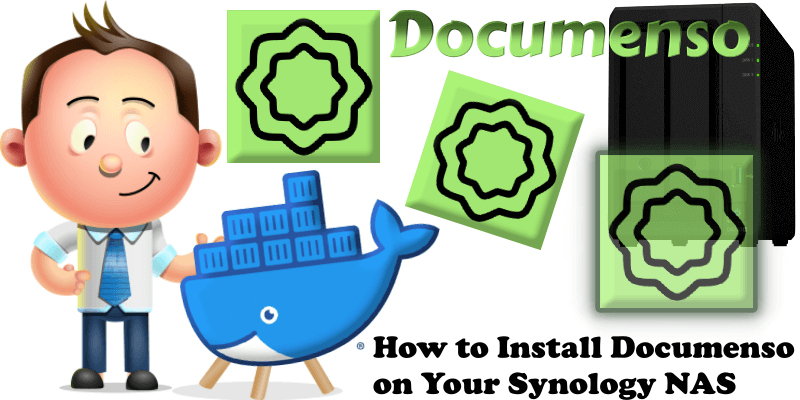
Signing documents digitally should be fast and easy and should be the best practice for every document signed worldwide. This is technically quite easy today, but it also introduces a new party to every signature: the signing tool providers. While this is not a problem in itself, it should make us think about how we want these providers of trust to work. Documenso aims to be the world’s most trusted document-signing tool. This trust is built by empowering you to self-host Documenso and review how it works under the hood. You can also use Docuseal as an alternative to Documenso. In this step by step guide I will show you how to install Documenso on your Synology NAS using Docker & Portainer.
STEP 1
Please Support My work by Making a Donation.
STEP 2
Install Portainer using my step by step guide. If you already have Portainer installed on your Synology NAS, skip this STEP. Attention: Make sure you have installed the latest Portainer version.
STEP 3
Make sure you have a synology.me Wildcard Certificate. Follow my guide to get a Wildcard Certificate. If you already have a synology.me Wildcard certificate, skip this STEP.
STEP 4
Go to Control Panel / Login Portal / Advanced Tab / click Reverse Proxy. Follow the instructions in the image below.

STEP 5
Now click the “Create” button. Follow the instructions in the image below.
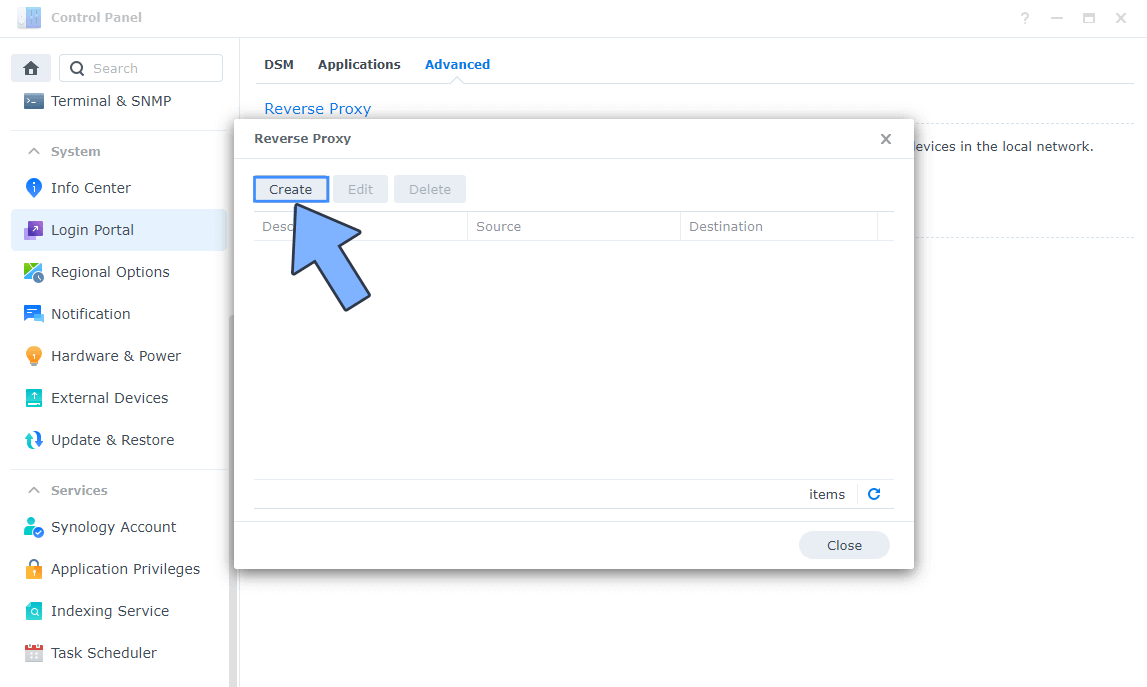
STEP 6
After you click the Create button, the window below will open. Follow the instructions in the image below.
On the General area, set the Reverse Proxy Name description: type in Documenso. After that, add the following instructions:
Source:
Protocol: HTTPS
Hostname: documenso.yourname.synology.me
Port: 443
Check Enable HSTS
Destination:
Protocol: HTTP
Hostname: localhost
Port: 3513

STEP 7
On the Reverse Proxy Rules click the Custom Header tab. Click Create and then, from the drop-down menu, click WebSocket. After you click on WebSocket, two Header Names and two Values will be automatically added. Click Save. Follow the instructions in the image below.

STEP 8
Go to Control Panel / Network / Connectivity tab/ Check Enable HTTP/2 then click Apply. Follow the instructions in the image below.

STEP 9
Go to Control Panel / Security / Advanced tab/ Check Enable HTTP Compression then click Apply. Follow the instructions in the image below.
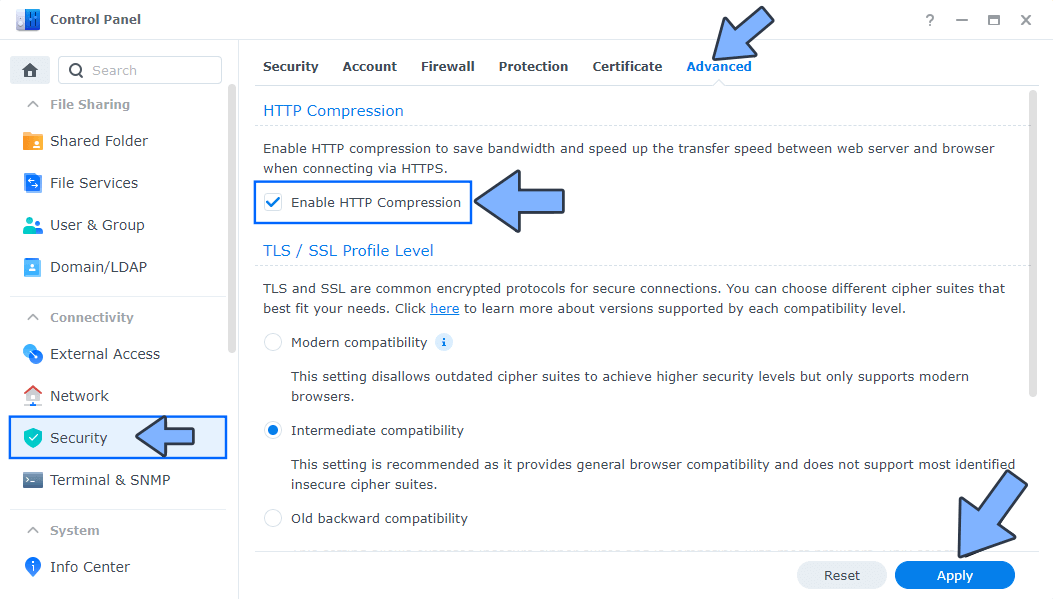
STEP 10
Go to File Station and open the docker folder. Inside the docker folder, create one new folder and name it documenso. Follow the instructions in the image below.
Note: Be careful to enter only lowercase, not uppercase letters.
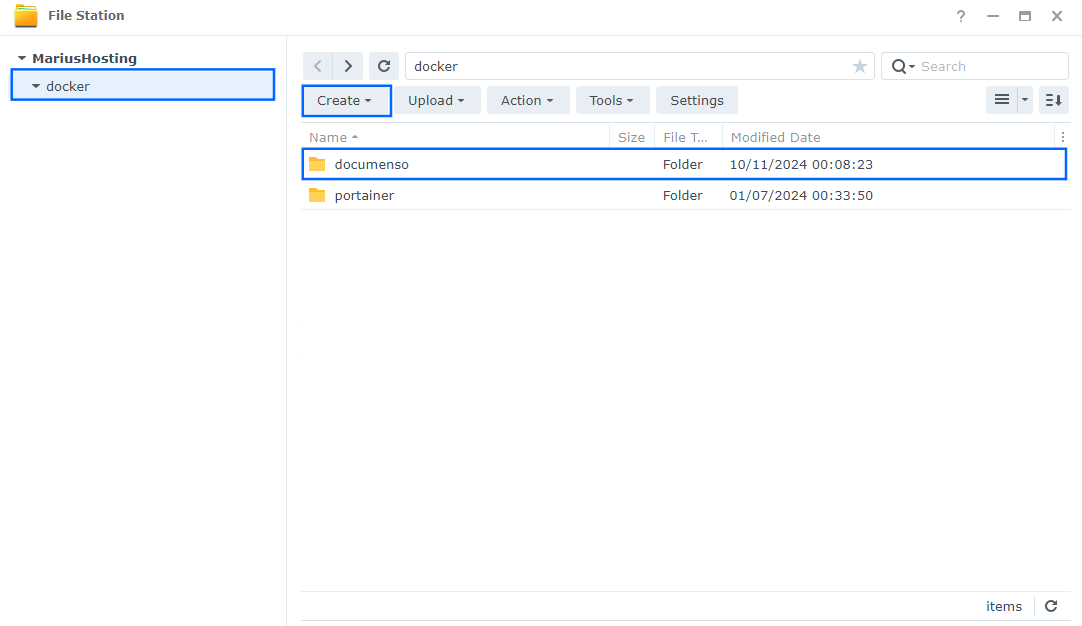
STEP 11
Now create two new folders inside the documenso folder that you have previously created at STEP 10 and name them data and db. Follow the instructions in the image below.
Note: Be careful to enter only lowercase, not uppercase letters.
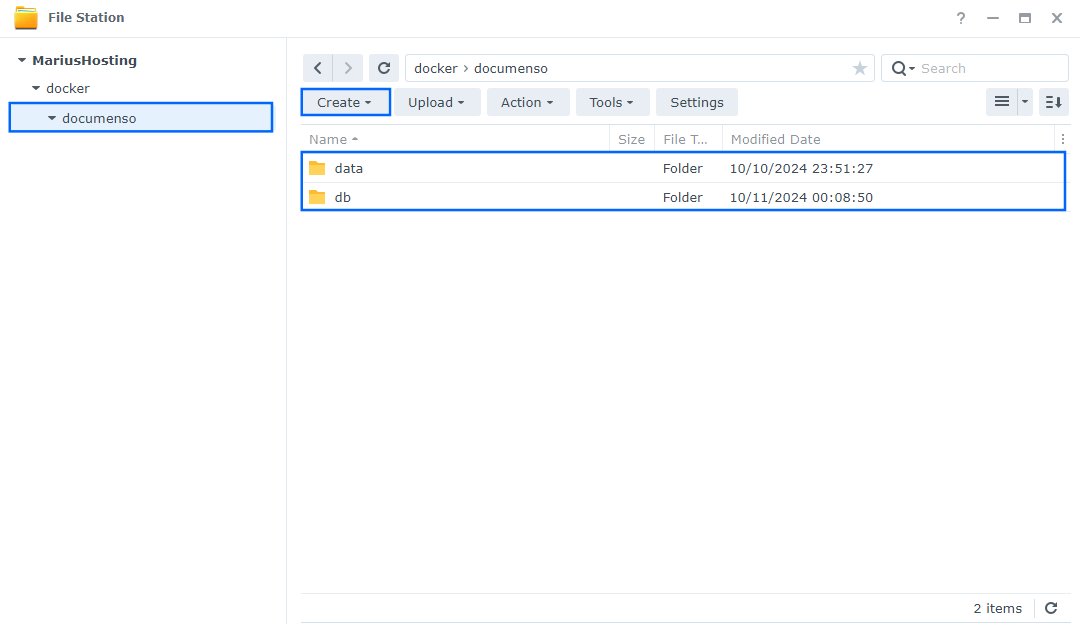
STEP 12
Download (click on the blue link below) and upload the cert.p12 file below in the data folder that you have previously created at STEP 11. Follow the instructions in the image below. 🔒Note: Support my work to unlock the password. You can use this password to download any file on mariushosting forever! cert.p12 is a 10-year self-signed certificate. If you don’t want to support my work and download the certificate that I created, you can create your own self-signed certificate using the documenso instructions.
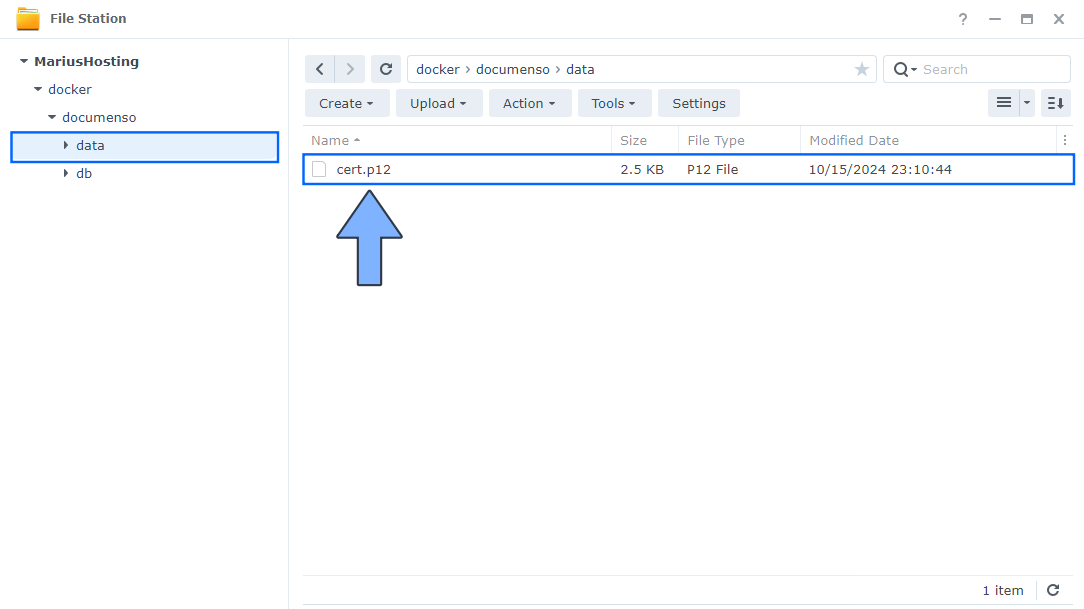
STEP 13
Follow my step by step guide on how to activate SMTP for your Gmail account. This step is mandatory. Note: If you don’t want to use the easiest way for SMTP with Google and you already have SMTP details from your own Mail Server, you can just skip this STEP and use your personalized email SMTP details instead.
STEP 14
Log into Portainer using your username and password. On the left sidebar in Portainer, click on Home then Live connect. Follow the instructions in the image below.

On the left sidebar in Portainer, click on Stacks then + Add stack. Follow the instructions in the image below.

STEP 15
In the Name field type in documenso. Follow the instructions in the image below.
services:
db:
image: postgres:18
container_name: Documenso-DB
hostname: documenso-db
security_opt:
- no-new-privileges:true
healthcheck:
test: ["CMD", "pg_isready", "-q", "-d", "documenso", "-U", "documensouser"]
timeout: 45s
interval: 10s
retries: 10
volumes:
- /volume1/docker/documenso/db:/var/lib/postgresql:rw
environment:
POSTGRES_DB: documenso
POSTGRES_USER: documensouser
POSTGRES_PASSWORD: documensopass
restart: on-failure:5
documenso:
image: documenso/documenso:latest
container_name: Documenso
ports:
- 3513:3000
volumes:
- /volume1/docker/documenso/data:/opt/documenso:rw
depends_on:
db:
condition: service_healthy
environment:
- PORT=3000
- NEXTAUTH_SECRET=iLE3qPl8jJZWSrmSJGERVQt6YKIQIoUT
- NEXT_PRIVATE_ENCRYPTION_KEY=Lzav2o6C0HBsg75bo2dUPqpOZ5k4904E
- NEXT_PRIVATE_ENCRYPTION_SECONDARY_KEY=Q6GigBFoGF62jhqzD4ebXEow5gLiSSs7
- NEXTAUTH_URL=https://documenso.yourname.synology.me
- NEXT_PUBLIC_WEBAPP_URL=https://documenso.yourname.synology.me
- NEXT_PRIVATE_INTERNAL_WEBAPP_URL=http://documenso:3000
- NEXT_PUBLIC_MARKETING_URL=https://documenso.yourname.synology.me
- NEXT_PRIVATE_DATABASE_URL=postgres://documensouser:documensopass@documenso-db:5432/documenso
- NEXT_PRIVATE_DIRECT_DATABASE_URL=postgres://documensouser:documensopass@documenso-db:5432/documenso
- NEXT_PUBLIC_UPLOAD_TRANSPORT=database
- NEXT_PRIVATE_SMTP_TRANSPORT=smtp-auth
- NEXT_PRIVATE_SMTP_HOST=smtp.gmail.com
- NEXT_PRIVATE_SMTP_PORT=587
- NEXT_PRIVATE_SMTP_USERNAME=Your-own-gmail-address
- NEXT_PRIVATE_SMTP_PASSWORD=Your-own-app-password
- NEXT_PRIVATE_SMTP_SECURE=false
- NEXT_PRIVATE_SMTP_FROM_NAME=mariushosting
- NEXT_PRIVATE_SMTP_FROM_ADDRESS=Your-own-gmail-address
- NEXT_PRIVATE_SIGNING_LOCAL_FILE_PATH=/opt/documenso/cert.p12
#NEXT_PRIVATE_SMTP_UNSAFE_IGNORE_TLS=true
#NEXT_PRIVATE_SMTP_APIKEY_USER=${NEXT_PRIVATE_SMTP_APIKEY_USER}
#NEXT_PRIVATE_SMTP_APIKEY=${NEXT_PRIVATE_SMTP_APIKEY}
#NEXT_PRIVATE_RESEND_API_KEY=${NEXT_PRIVATE_RESEND_API_KEY}
#NEXT_PRIVATE_MAILCHANNELS_API_KEY=${NEXT_PRIVATE_MAILCHANNELS_API_KEY}
#NEXT_PRIVATE_MAILCHANNELS_ENDPOINT=${NEXT_PRIVATE_MAILCHANNELS_ENDPOINT}
#NEXT_PRIVATE_MAILCHANNELS_DKIM_DOMAIN=${NEXT_PRIVATE_MAILCHANNELS_DKIM_DOMAIN}
#NEXT_PRIVATE_MAILCHANNELS_DKIM_SELECTOR=${NEXT_PRIVATE_MAILCHANNELS_DKIM_SELECTOR}
#NEXT_PRIVATE_MAILCHANNELS_DKIM_PRIVATE_KEY=${NEXT_PRIVATE_MAILCHANNELS_DKIM_PRIVATE_KEY}
#NEXT_PUBLIC_DOCUMENT_SIZE_UPLOAD_LIMIT=${NEXT_PUBLIC_DOCUMENT_SIZE_UPLOAD_LIMIT}
#NEXT_PUBLIC_POSTHOG_KEY=${NEXT_PUBLIC_POSTHOG_KEY}
#NEXT_PUBLIC_DISABLE_SIGNUP=${NEXT_PUBLIC_DISABLE_SIGNUP}
#NEXT_PRIVATE_UPLOAD_ENDPOINT=${NEXT_PRIVATE_UPLOAD_ENDPOINT}
#NEXT_PRIVATE_UPLOAD_FORCE_PATH_STYLE=${NEXT_PRIVATE_UPLOAD_FORCE_PATH_STYLE}
#NEXT_PRIVATE_UPLOAD_REGION=${NEXT_PRIVATE_UPLOAD_REGION}
#NEXT_PRIVATE_UPLOAD_BUCKET=${NEXT_PRIVATE_UPLOAD_BUCKET}
#NEXT_PRIVATE_UPLOAD_ACCESS_KEY_ID=${NEXT_PRIVATE_UPLOAD_ACCESS_KEY_ID}
#NEXT_PRIVATE_UPLOAD_SECRET_ACCESS_KEY=${NEXT_PRIVATE_UPLOAD_SECRET_ACCESS_KEY}
#NEXT_PRIVATE_GOOGLE_CLIENT_ID=${NEXT_PRIVATE_GOOGLE_CLIENT_ID}
#NEXT_PRIVATE_GOOGLE_CLIENT_SECRET=${NEXT_PRIVATE_GOOGLE_CLIENT_SECRET}
Note: Before you paste the code above in the Web editor area below, change the value for NEXTAUTH_SECRET. (Generate your own 32 length NEXTAUTH_SECRET.)
Note: Before you paste the code above in the Web editor area below, change the value for NEXT_PRIVATE_ENCRYPTION_KEY. (Generate your own 32 length NEXT_PRIVATE_ENCRYPTION_KEY.)
Note: Before you paste the code above in the Web editor area below, change the value for NEXT_PRIVATE_ENCRYPTION_SECONDARY_KEY. (Generate your own 32 length NEXT_PRIVATE_ENCRYPTION_SECONDARY_KEY.)
Note: Before you paste the code above in the Web editor area below, change the value for NEXTAUTH_URL and type in your own synology.me DDNS with https:// at the beginning that you have previously created at STEP 6.
Note: Before you paste the code above in the Web editor area below, change the value for NEXT_PUBLIC_WEBAPP_URL and type in your own synology.me DDNS with https:// at the beginning that you have previously created at STEP 6.
Note: Before you paste the code above in the Web editor area below, change the value for NEXT_PUBLIC_MARKETING_URL and type in your own synology.me DDNS with https:// at the beginning that you have previously created at STEP 6.
Note: Before you paste the code above in the Web editor area below, change the value for NEXT_PRIVATE_SMTP_USERNAME and type in your own Gmail address. STEP 13.
Note: Before you paste the code above in the Web editor area below, change the value for NEXT_PRIVATE_SMTP_PASSWORD and type in your own Gmail app password. STEP 13.
Note: Before you paste the code above in the Web editor area below, change the value for NEXT_PRIVATE_SMTP_FROM_NAME and type in your own name. mariushosting is an example for a name.
Note: Before you paste the code above in the Web editor area below, change the value for NEXT_PRIVATE_SMTP_FROM_ADDRESS and type in your own Gmail address. STEP 13.
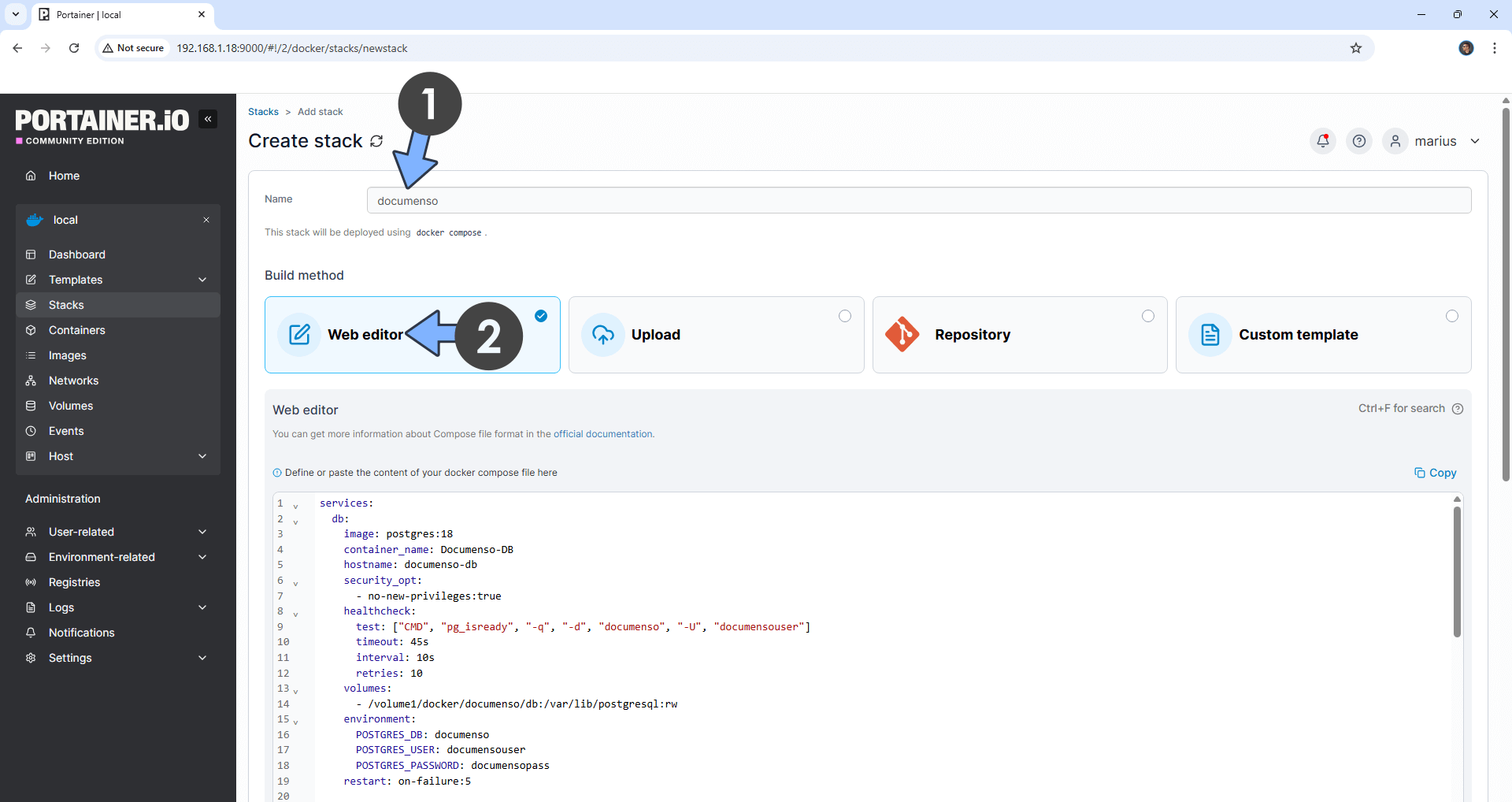
STEP 16
Scroll down on the page until you see a button named Deploy the stack. Click on it. Follow the instructions in the image below. The installation process can take up to a few minutes. It will depend on your Internet speed connection.
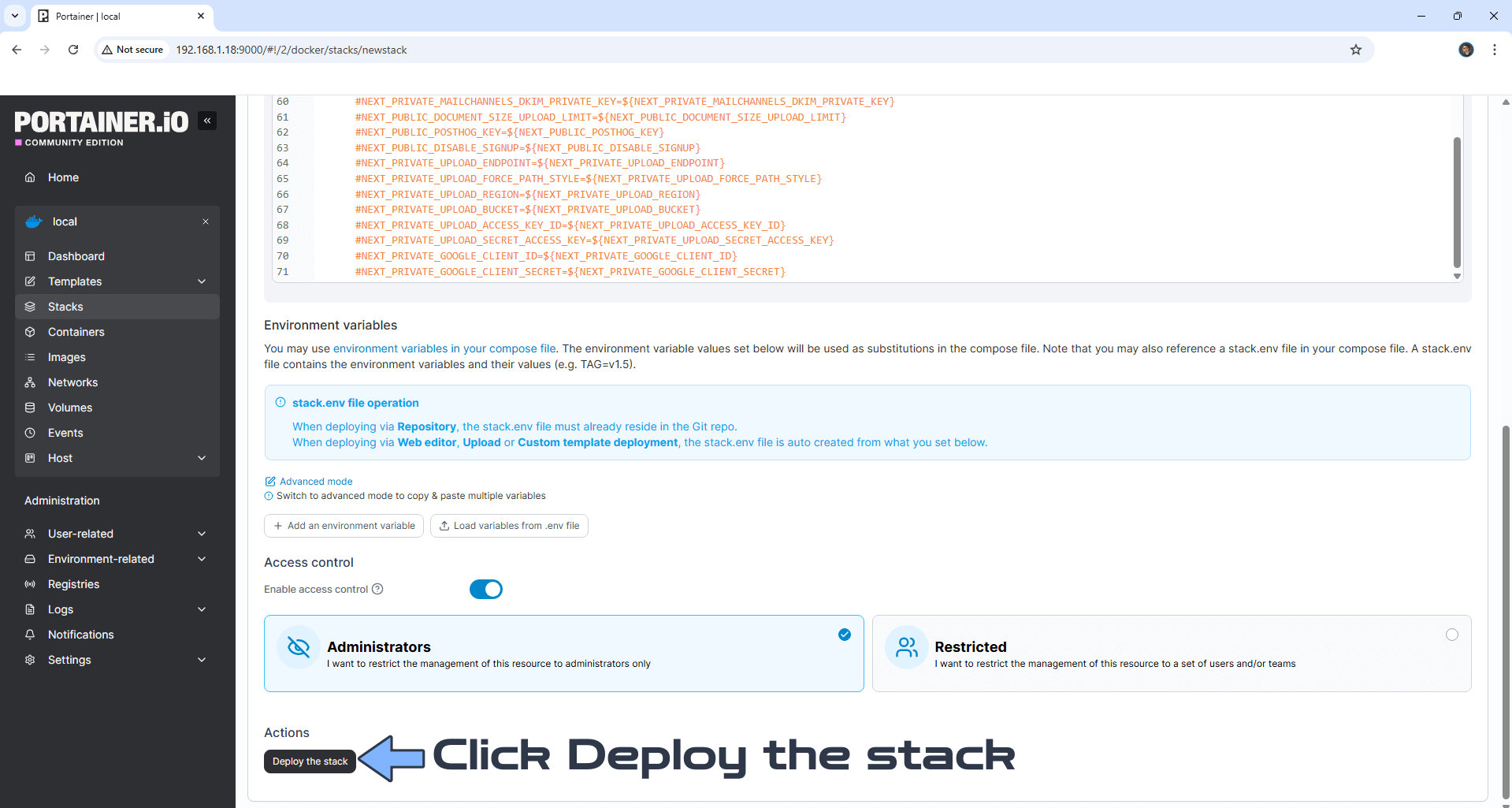
STEP 17
If everything goes right, you will see the following message at the top right of your screen: “Success Stack successfully deployed“.

STEP 18
🟢Please Support My work by Making a Donation. Almost 99,9% of the people that install something using my guides forget to support my work, or just ignore STEP 1. I’ve been very honest about this aspect of my work since the beginning: I don’t run any ADS, I don’t require subscriptions, paid or otherwise, I don’t collect IPs, emails, and I don’t have any referral links from Amazon or other merchants. I also don’t have any POP-UPs or COOKIES. I have repeatedly been told over the years how much I have contributed to the community. It’s something I love doing and have been honest about my passion since the beginning. But I also Need The Community to Support me Back to be able to continue doing this work.
STEP 19
Now open your browser and type in your HTTPS/SSL certificate like this https://documenso.yourname.synology.me/signup that you have previously created at STEP 6. In my case it’s https://documenso.mariushosting.synology.me/signup Type in your own details, then click the Sign Here square. Follow the instructions in the image below.
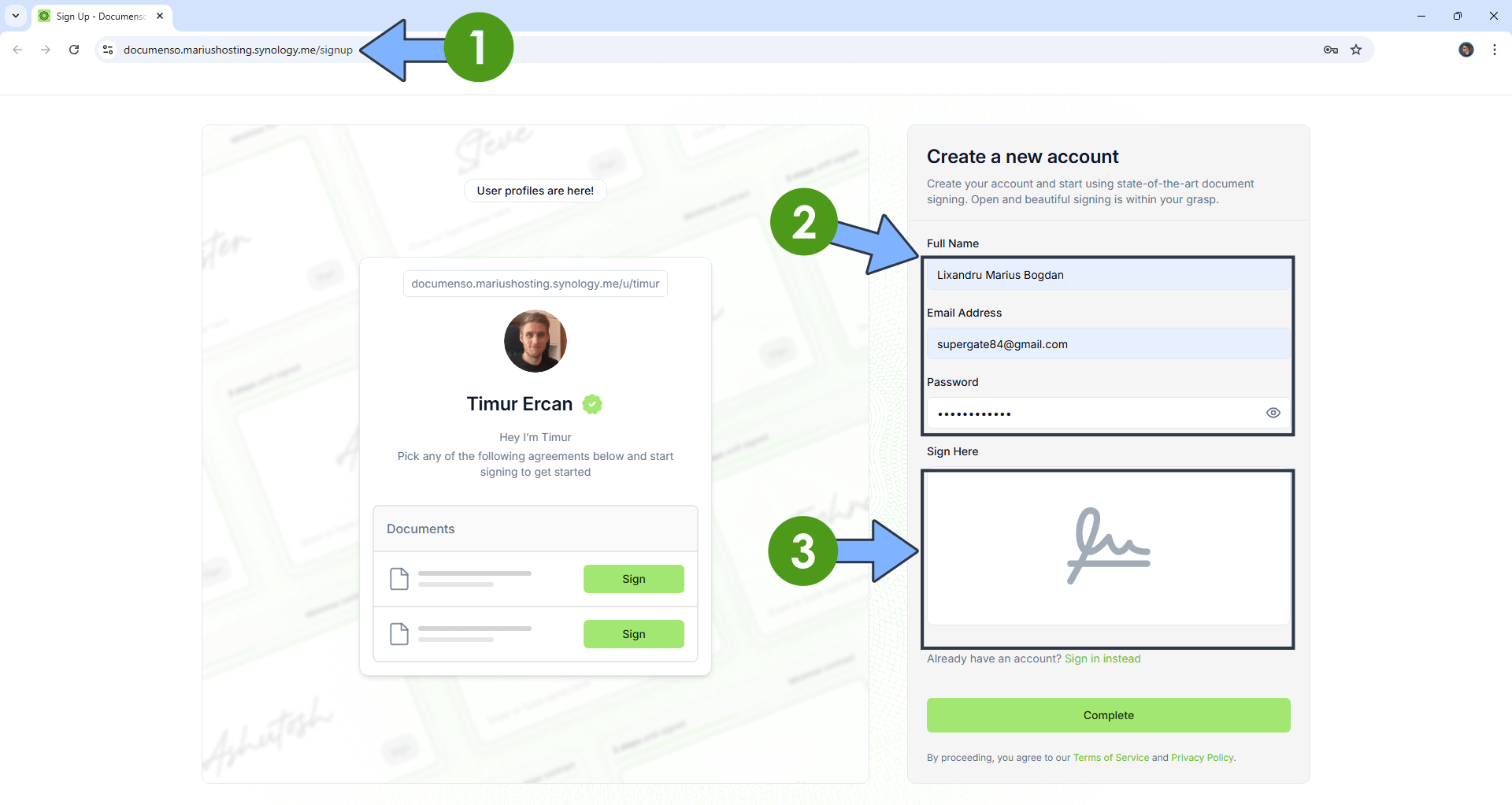
Add your own signature, then click Next. Follow the instructions in the image below.
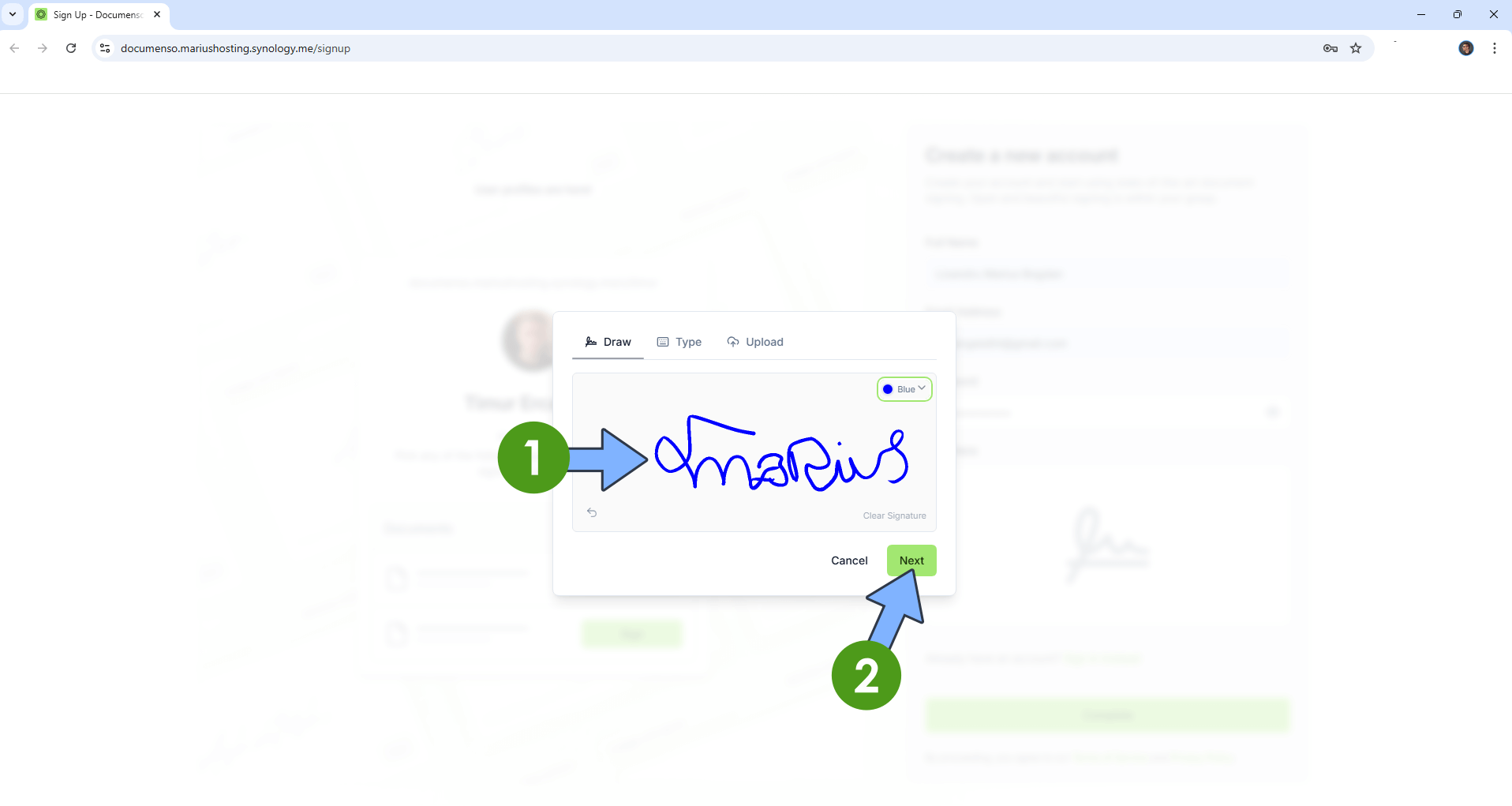
STEP 20
Click Complete. Follow the instructions in the image below.

STEP 21
Check your email, then click Confirm email. Follow the instructions in the image below.
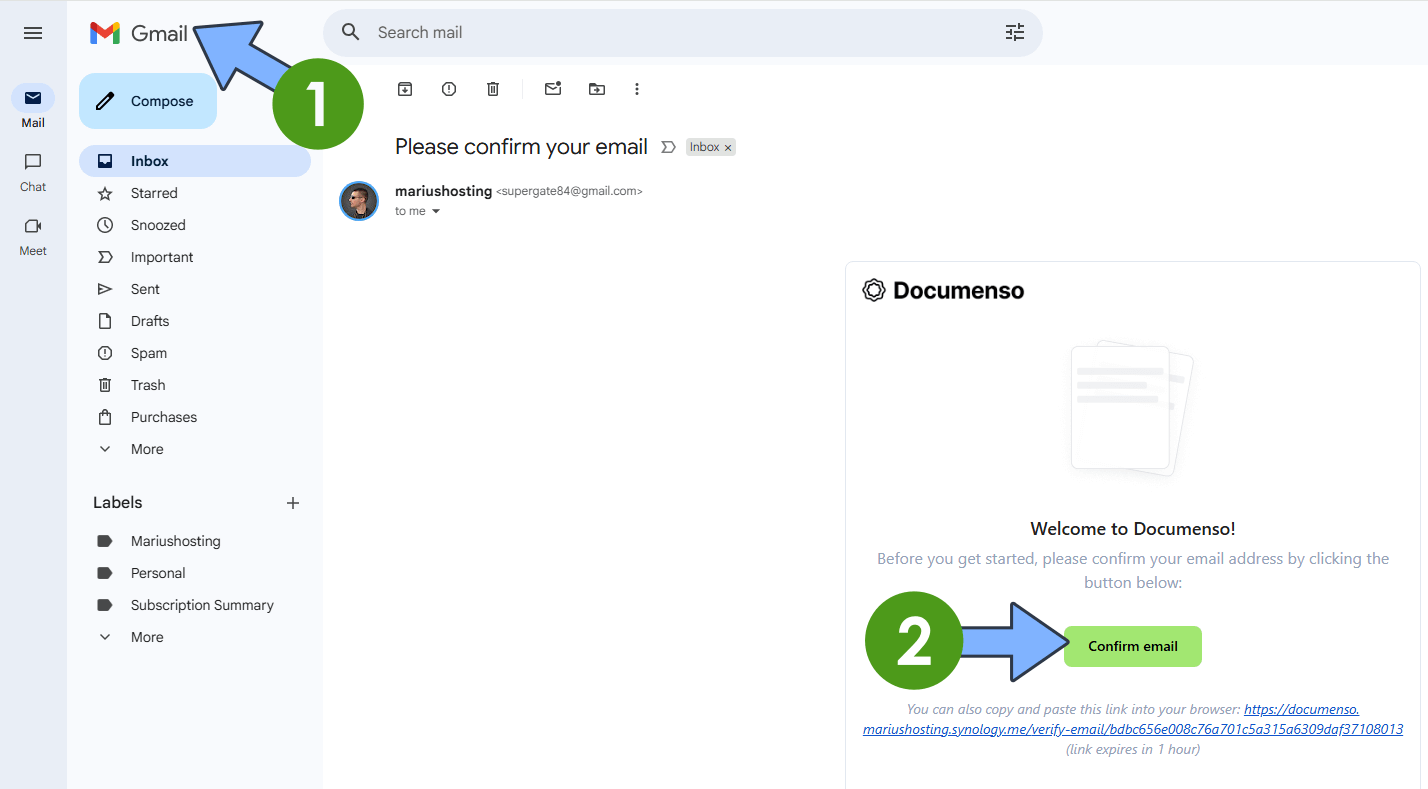
STEP 22
Click Continue. Follow the instructions in the image below.
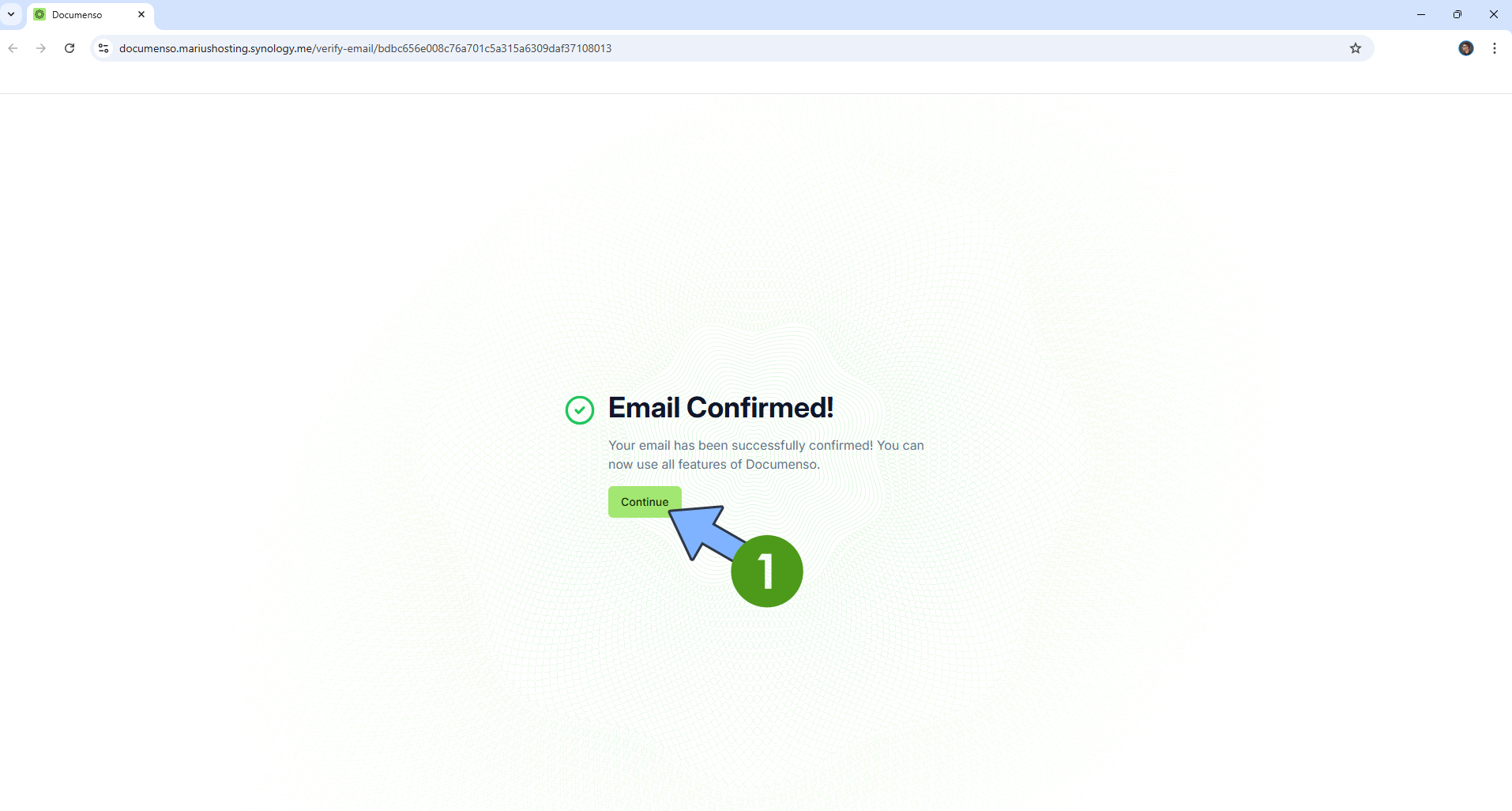
STEP 23
Upload your PDF document!
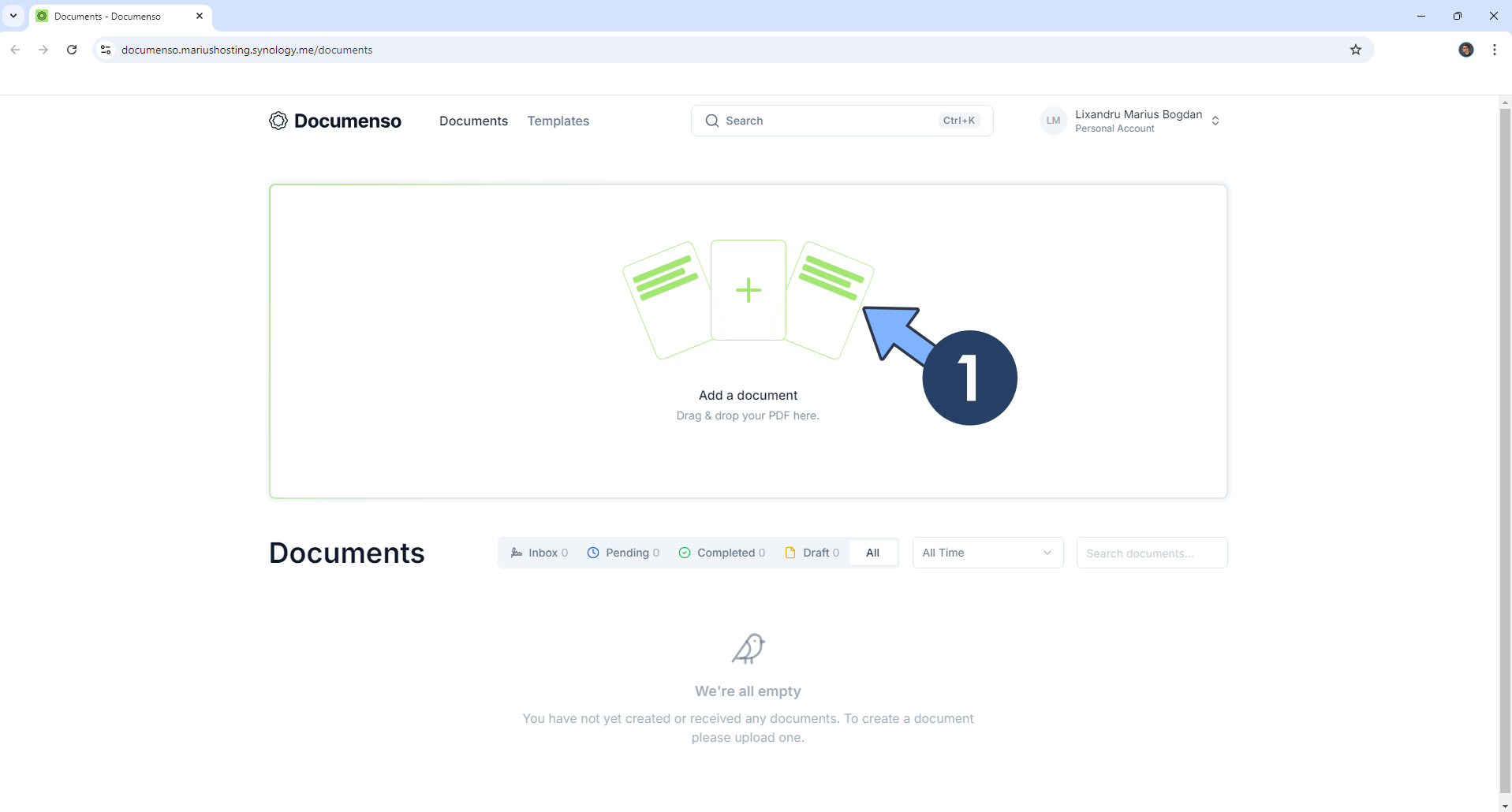
STEP 24
Your Documenso instance at a glance! Sign in your documents!
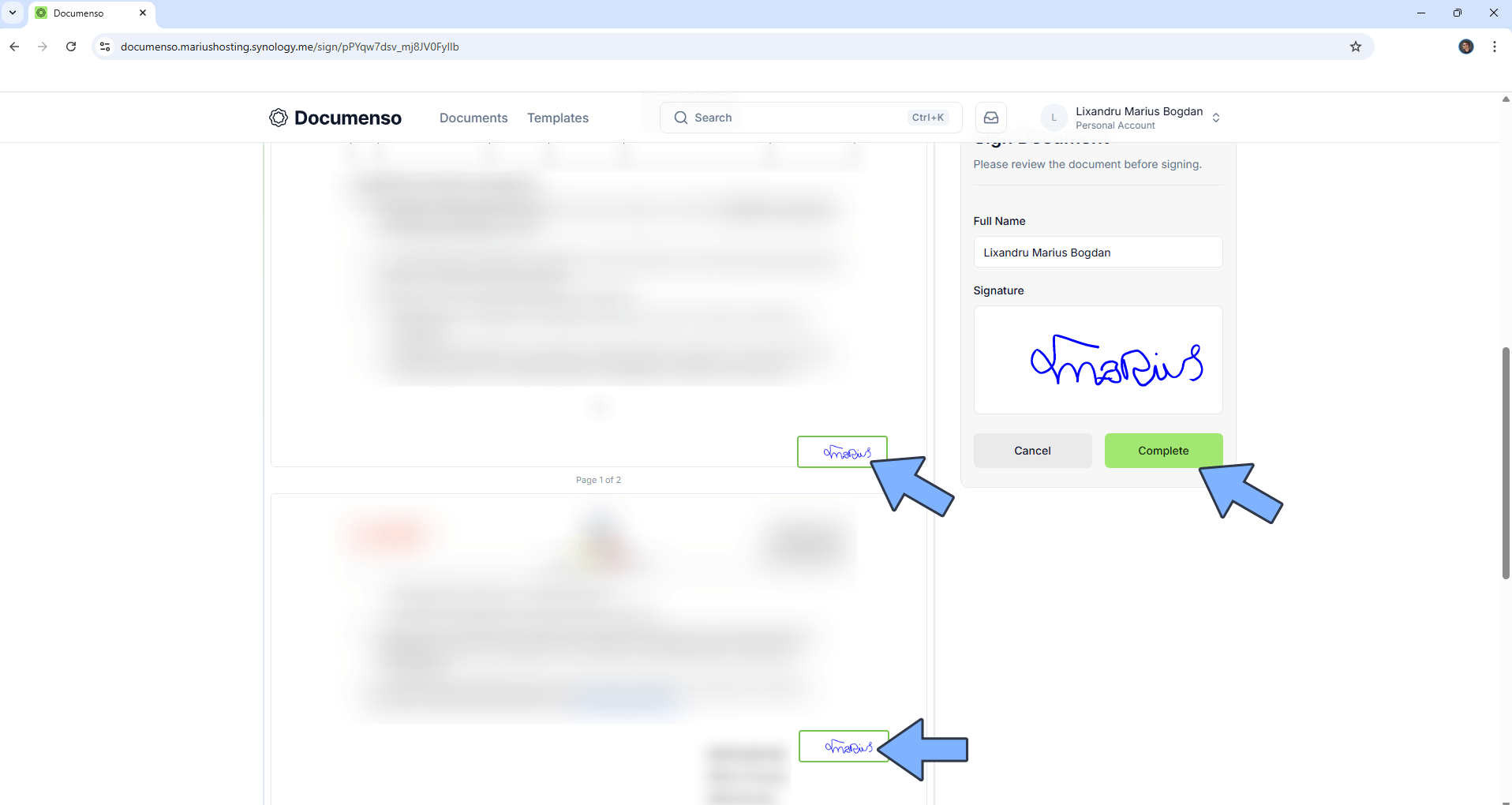
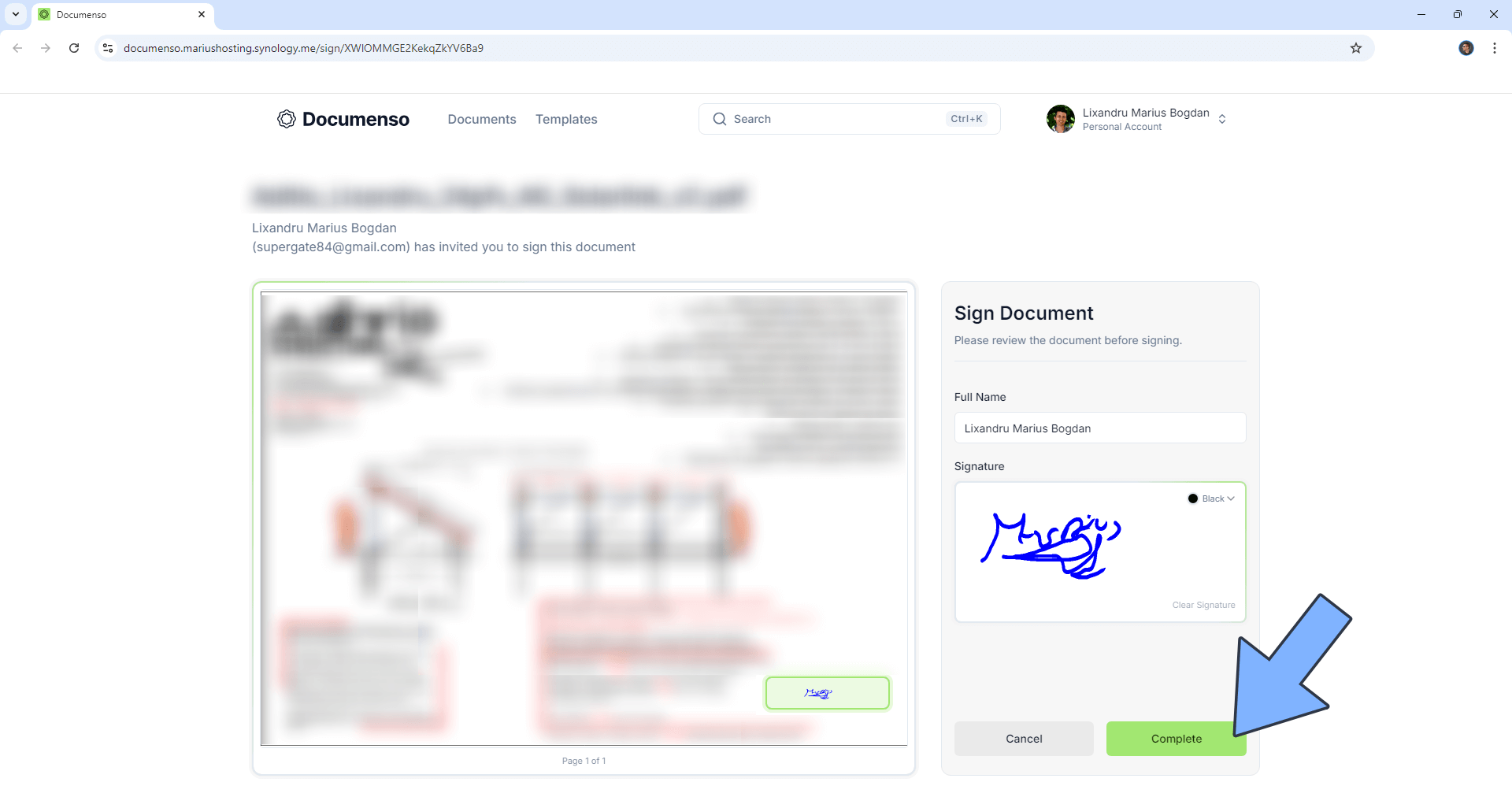
Enjoy Documenso!
If you want to disable public registration to your Documenso instance, just change the following line at STEP 14
#NEXT_PUBLIC_DISABLE_SIGNUP=${NEXT_PUBLIC_DISABLE_SIGNUP}with
NEXT_PUBLIC_DISABLE_SIGNUP=trueThen update the stack to apply the new settings.
⚠️Warning: If you run the Documenso instance on localhost instead of reverse proxy, the send email confirmation at STEP 21 will not work. Reverse Proxy is mandatory for Documenso to make SMTP work.
If you encounter issues by using this container, make sure to check out the Common Docker issues article.
Note: Can I run Docker on my Synology NAS? See the supported models.
Note: How to Back Up Docker Containers on your Synology NAS.
Note: Find out how to update the Documenso container with the latest image.
Note: How to Free Disk Space on Your NAS if You Run Docker.
Note: How to Schedule Start & Stop For Docker Containers.
Note: How to Activate Email Notifications.
Note: How to Add Access Control Profile on Your NAS.
Note: How to Change Docker Containers Restart Policy.
Note: How to Use Docker Containers With VPN.
Note: Convert Docker Run Into Docker Compose.
Note: How to Clean Docker.
Note: How to Clean Docker Automatically.
Note: Best Practices When Using Docker and DDNS.
Note: Some Docker Containers Need WebSocket.
Note: Find out the Best NAS Models For Docker.
Note: Activate Gmail SMTP For Docker Containers.
